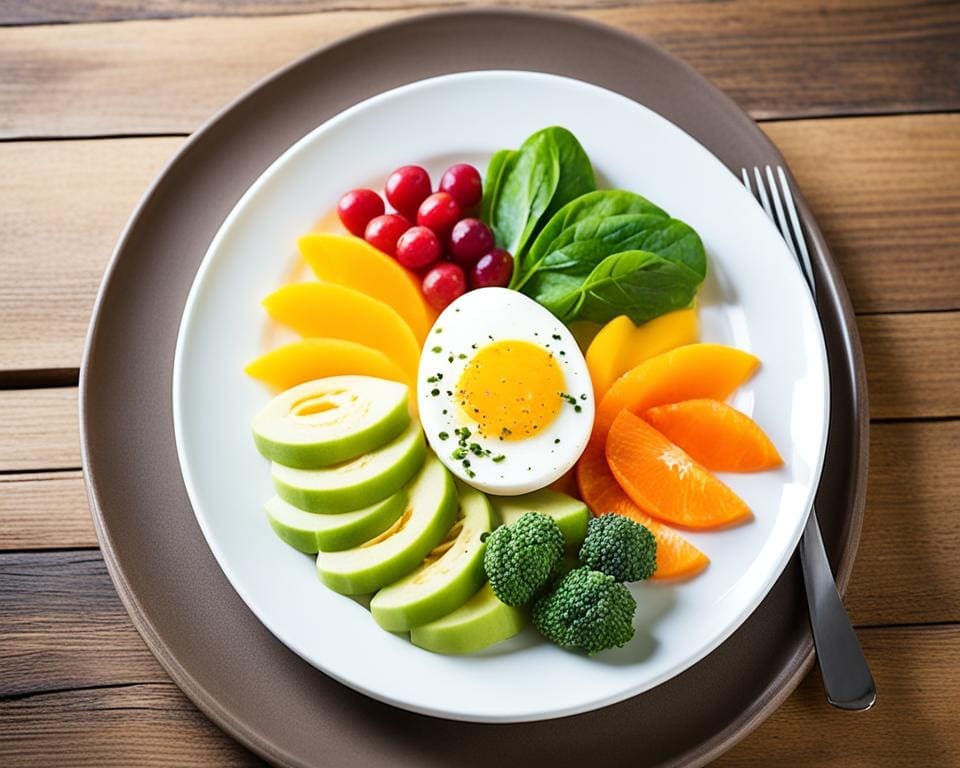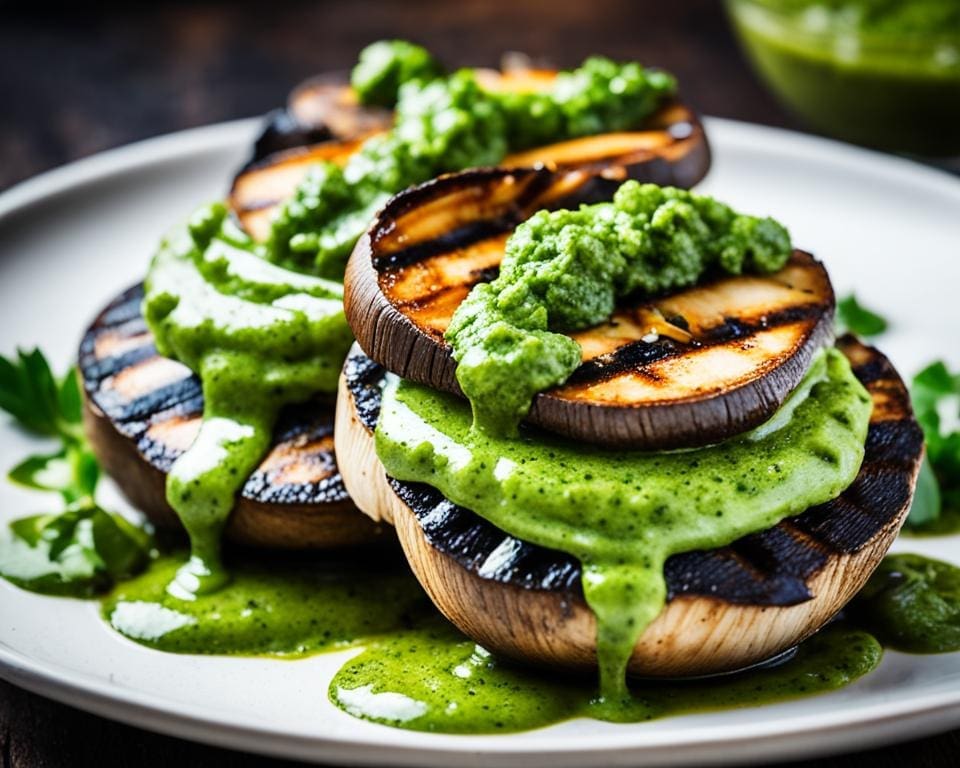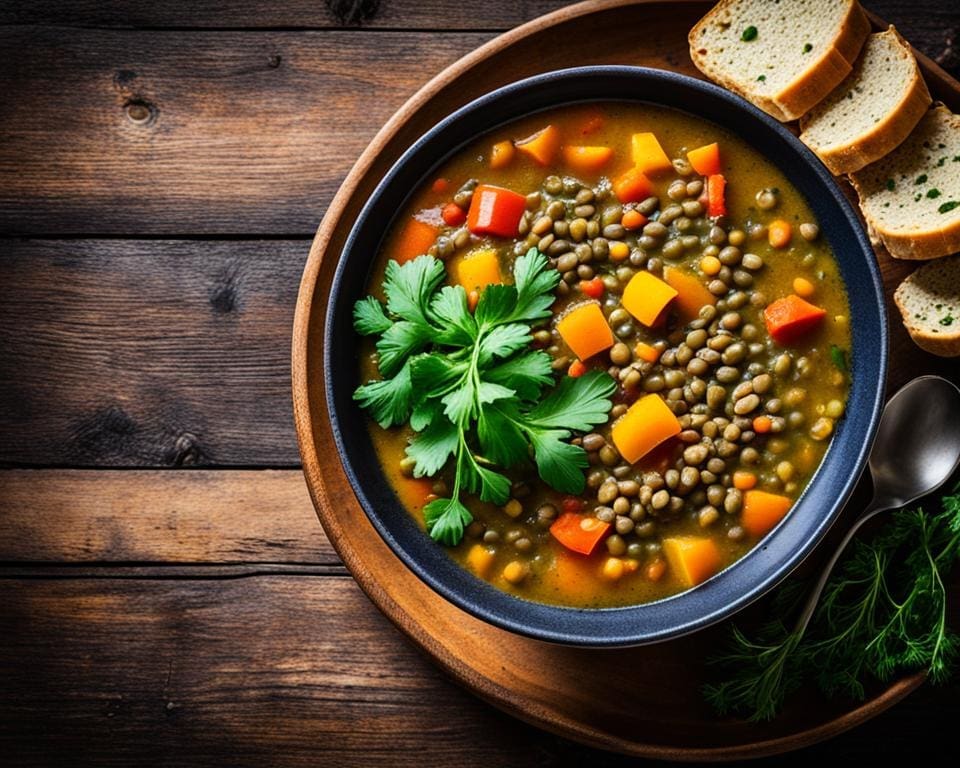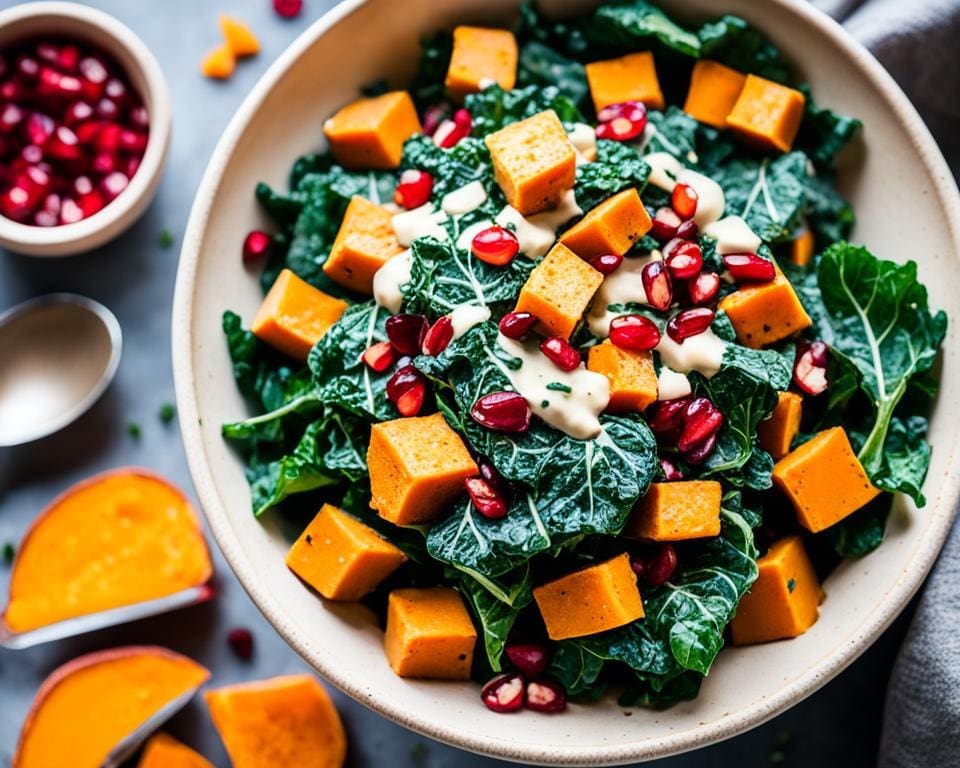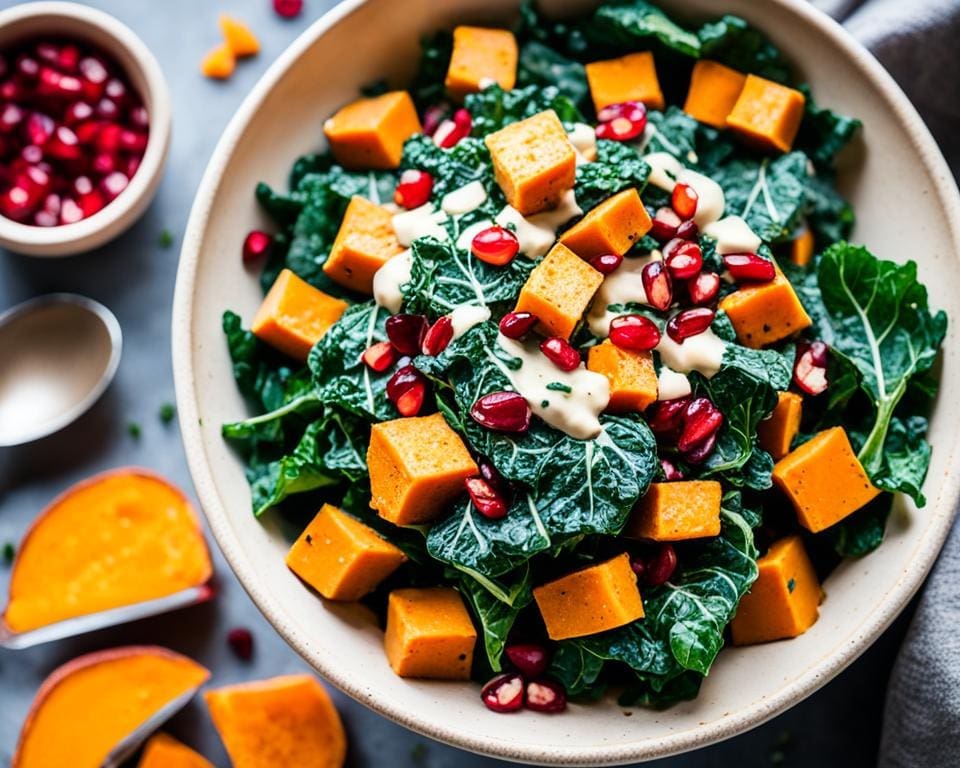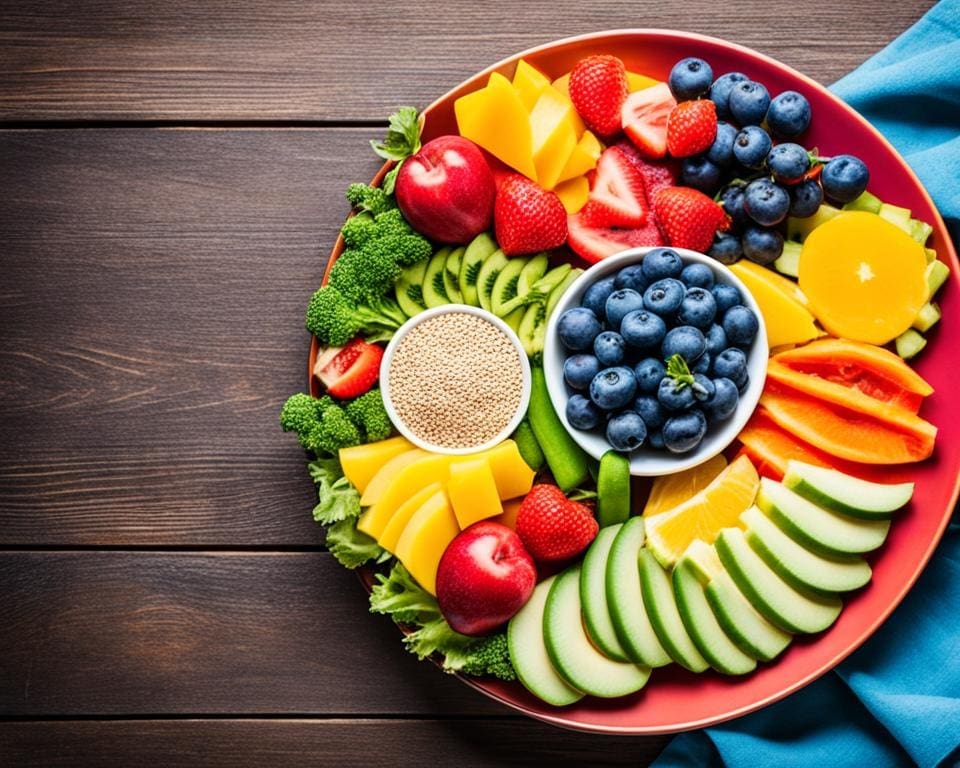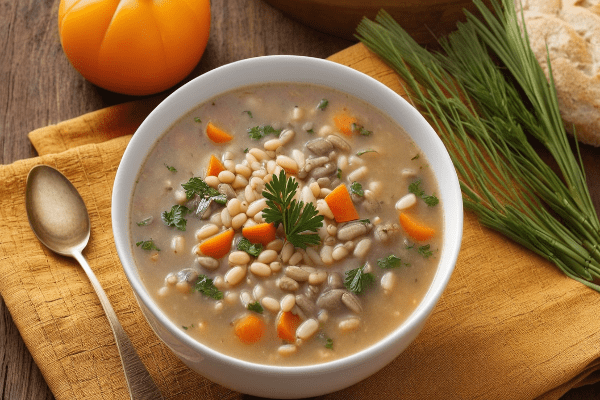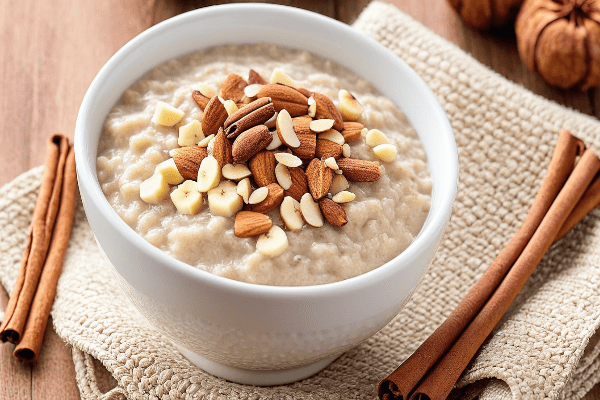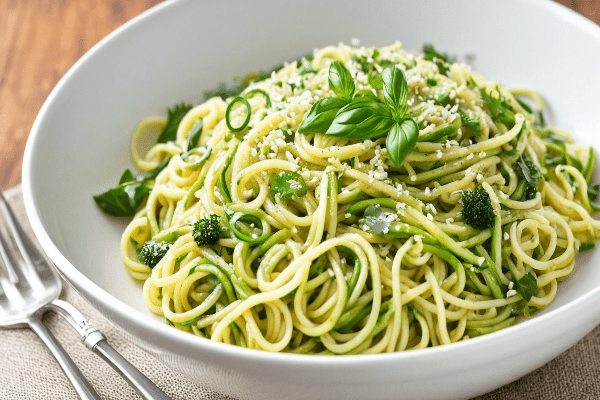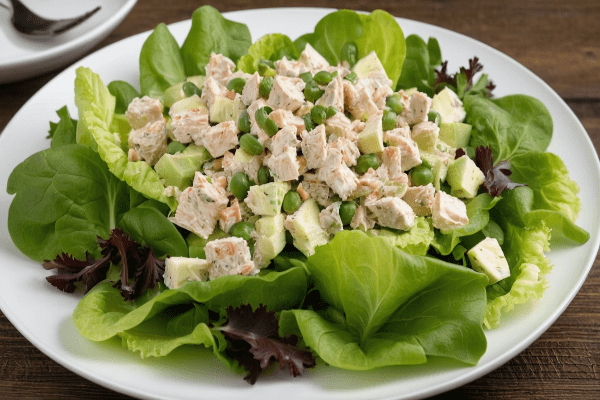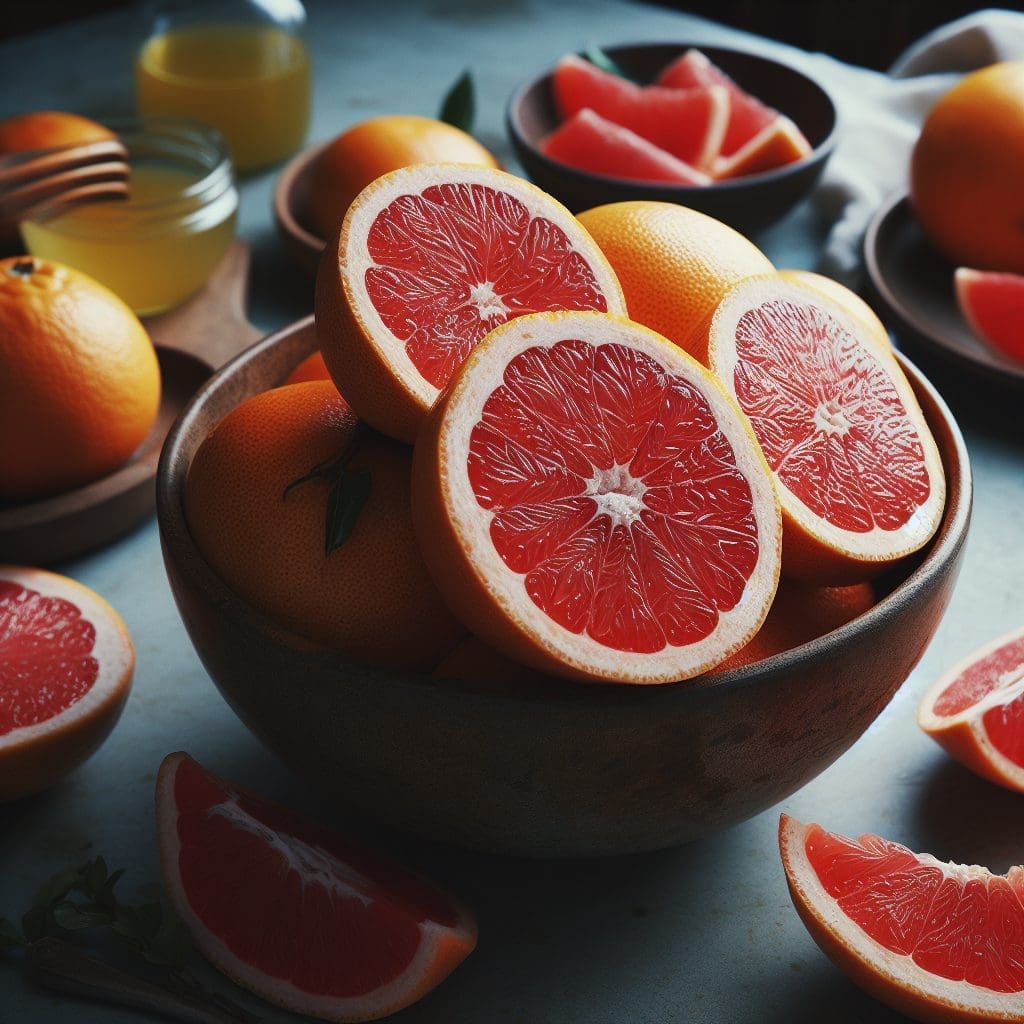Imagine making changes in what you eat and seeing your health improve.
You might even reverse type 2 diabetes. Many folks have done this by following a diabetes-friendly eating plan.
This plan focuses on eating foods full of nutrients and watching how much you eat. It also means eating meals at the same times each day. These steps can help lower your blood sugar and make you feel better12.
Living with a diabetes diet doesn’t mean saying no to foods you love. It’s all about making wise choices for your body to help control your condition. The main parts of this diet are lots of fruits, veggies, whole grains, lean meats, and good fats. These foods give your body what it needs, help steady your blood sugar, and lower the chance of heart problems23.
One big plus of this diet is you might lose weight. Even losing a little bit of weight, like 5 to 10% of your body, can make a big difference. It can help control your blood sugar and make you healthier overall1. To make it work, choose your foods smartly and move your body more. This combo can help you lose weight and maybe use less medicine1.
Everyone is different, and so are their diets. Maybe you need extra help to figure out what’s best for you. A dietitian can work with you to create a meal plan that fits your health needs, tastes, and life. With the right support, you can manage your diabetes well and keep enjoying life.
Key Takeaways
- A diabetes-friendly diet focuses on nutrient-dense foods, portion control, and regular mealtimes to help manage blood sugar levels.
- Incorporating fruits, vegetables, whole grains, lean proteins, and healthy fats can provide essential nutrients and reduce the risk of complications.
- Losing 5-10% of body weight through a healthy diet and regular exercise can significantly improve blood sugar control and overall health.
- Consulting with a registered dietitian can help create a personalized meal plan tailored to individual needs and preferences.
- Adopting a diabetes-friendly diet empowers individuals to take control of their health and potentially reverse type 2 diabetes.
Understanding Diabetes and the Role of Diet
Diabetes is a health issue that affects many people around the world. It was 4.4% in 2011 but might hit 7.7% by 20304. The number of people with diabetes has been rising. Knowing about the different types of diabetes and how food affects our blood sugar is very important for staying healthy.
Types of Diabetes
There are several types of diabetes. Each one is different and has its own causes.
- Type 1 diabetes is when the body attacks its own pancreas. The attack leaves the body with little to no insulin.
- Type 2 diabetes happens when the body can’t use insulin well. It leads to high blood sugar levels5.
- Gestational diabetes occurs during pregnancy. It can affect both the mother and her baby.
- Prediabetes is when blood sugar is higher than normal. It raises the risk of getting type 2 diabetes and other problems.

Impact of Diet on Blood Sugar Levels
What we eat impacts our blood sugar levels. A diet that includes fruits, veggies, whole grains, and dairy can lower these levels2. But too many calories and carbs can make blood sugar go up. This can lead to health issues like nerve, kidney, and heart problems over time.
Carbs really affect blood sugar. Proteins and fats don’t have as big an impact5. By eating the same amount of carbs at every meal, you can control your blood sugar5. Counting carbs can help you keep track and make sure your blood sugar stays stable2.
| Nutrient |
Impact on Blood Sugar |
Recommended Intake |
| Carbohydrates |
High |
Consistent intake per meal, monitor consumption |
| Protein |
Low |
Lean sources, moderate intake |
| Fat |
Low |
Focus on healthy fats, limit saturated and trans fats |
People with type 2 diabetes need to keep up with their treatment5. This includes changing their lifestyle, taking care of themselves, and taking medicine. It’s important to control A1c, blood pressure, and cholesterol5.
Managing diabetes means eating right, exercising, checking your blood sugar, and following your doctor’s advice5.
A healthy-eating plan for diabetes should aim for no more than 200 milligrams of cholesterol and 2,300 milligrams of sodium per day2.
By learning about diabetes and diet, you can stay healthy and lower your risk of problems. Working with your doctor and a dietitian can help you make a plan that’s right for you.
Key Components of a Diabetes-Friendly Diet
Eating right can do a lot for your health if you have diabetes2. Focusing on the right foods, watching how much you eat, and picking the best carbs can keep you healthy. You’ll feel better and lower your risk of problems from diabetes.

Focus on Nutrient-Dense Foods
Start your meals with foods that are rich in vitamins and minerals2. Veggies, fruits, whole grains, and proteins are great for making you feel full and full of energy. These foods help keep your blood sugar in check.
Eating fiber is important for your blood sugar2. Include healthy fish and good fats in your meals too. This will help your heart and lower your cholesterol.
Importance of Portion Control
It’s not just what you eat but how much. Keeping an eye on portions helps you stay the right weight and avoid blood sugar spikes2. Know your carbs and the right amount to eat to keep a good balance in your blood sugar6.
Put plenty of veggies, proteins, and carbs on your plate, but don’t overdo it. Eating well but not too much is the key. This way, you get what you need without too many extra calories.
Choosing Low Glycemic Index Foods
Not all carbs are bad. Some are better for your blood sugar than others. Things like vegetables, some fruits, and whole grains won’t cause quick sugar spikes.
Eating these kinds of carbs helps keep your blood sugar level. You won’t feel extra hungry and tired after meals. Plus, it’s easier to stay in control of your diabetes.
| Food Group |
Low GI Options |
Benefits |
| Vegetables |
Broccoli, spinach, carrots, bell peppers |
Rich in fiber, vitamins, and minerals |
| Whole Grains |
Oats, quinoa, brown rice, whole-grain bread |
Provide slow-release carbohydrates and fiber |
| Legumes |
Lentils, chickpeas, kidney beans, black beans |
Excellent source of plant-based protein and fiber |
| Fruits |
Berries, apples, pears, citrus fruits |
Offer natural sweetness and essential nutrients |
Eating smart, watching portions, and picking low-GI foods really works. It’s not hard, and it makes a big difference in your health. Every move towards better eating is a plus for your future.
Protein: Building Blocks for Blood Sugar Stability
Protein is key for handling blood sugar in people with diabetes. It slows how carbs are digested. This keeps glucose from spiking in your blood7. You feel full longer, which helps with managing weight too.
Pick lean meats, fish, eggs, and plants for your protein. Birds like chicken and turkey are good. So are less fatty cuts of beef. They’re full of quality protein and not too much unhealthy fat. Fish like salmon and tuna give you protein and the good omega-3 fats.
Eggs are a great choice, too, with 6 grams of protein in one big egg. They have choline for your brain, too. You can also try Greek yogurt, which has double the protein of regular yogurt. Eat it with berries or nuts for extra fiber and good fats.
If you don’t eat animal products or want more plant-based proteins, try legumes, nuts, and tofu. Legumes, like lentils and beans, are both protein and fiber rich. This helps keep your blood sugar steady. Nuts and seeds are good for snacks, full of protein, fats, and fiber. Tofu is made from soy and can go in many meals.
A study in the Journal of Physiology says too many animal proteins might harm metabolic health. It found that cutting back on a certain kind of amino acid from animal proteins was good for you7. So, focusing on plant and lean animal proteins might be better for you in the long run.
Here are some tips for adding protein to your diet:
- Get 20-30 grams of protein each meal to keep your blood sugar steady and feel full.
- Choose lean proteins to cut down on bad fats and lower your heart disease risk.
- Add complex carbs and healthy fats to your meals along with protein to help control your blood sugar.
| Protein Source |
Serving Size |
Protein (grams) |
| Chicken breast |
3 oz |
26 |
| Salmon |
3 oz |
22 |
| Egg |
1 large |
6 |
| Greek yogurt |
6 oz |
15-20 |
| Lentils |
1/2 cup, cooked |
9 |
| Almonds |
1 oz |
6 |
| Tofu |
1/2 cup |
10 |
Eating enough protein in a smart way helps keep your blood sugar even. It stops you from getting too hungry. Plus, it’s good for your whole body. Just make sure to pick protein that’s lean. Add in some plant foods too. And don’t forget to mix protein with good carbs and fats for the best nutrition.
Fiber: The Unsung Hero in Diabetes Management
Fiber is key in managing diabetes, though many overlook its benefits. This nutrient can help control blood sugar well. It slows down how sugar enters your blood, avoiding quick spikes in glucose8. Add fiber-rich foods to your diet to improve diabetes control. This also lowers the risk of complications.
Soluble vs. Insoluble Fiber
Different types of fiber exist, like soluble and insoluble. Soluble fiber mixes with water, forming a gel in your gut. It’s great for lowering blood sugar and cholesterol8. Find it in beans, oats, flaxseed, and oat bran8.
Insoluble fiber doesn’t mix with water and moves through your body without breaking down. It doesn’t directly affect blood sugar. But, it helps keep your digestive system healthy by encouraging regular bowel movements. You can get this type of fiber from whole grains, vegetables, and legumes.
Best Sources of Fiber for Diabetes
Add many fiber-rich foods to your diet for better diabetes management. Choose whole foods over fiber supplements. They offer vitamins, minerals, and other nutrients8. Good sources of fiber for diabetes include:
- Whole grains: Oats, barley, quinoa, whole wheat bread, and brown rice
- Fruits: Berries, apples, pears, and citrus fruits
- Vegetables: Leafy greens, broccoli, cauliflower, and carrots
- Legumes: Beans, lentils, and peas
- Nuts and seeds: Almonds, chia seeds, and flaxseeds
Beta-glucan in barley and oats can help insulin work better, lower blood pressure, and make you feel full longer9. Eating lots of fiber food releases hormones that control hunger, like GLP-1 and PYY9.
| Fiber Recommendations |
Men |
Women |
| 50 years or younger |
38 grams |
25 grams |
| 51 years or older |
30 grams |
21 grams |
The Institute of Medicine gives daily fiber goals for adults, shown in the table8. Try to up your fiber intake slowly. Adding too much fiber fast can upset your stomach8.
Choosing fiber for your diabetes diet is a smart move. It can help control blood sugar, keep your heart healthy, and manage your weight. Go for whole foods high in fiber and increase your intake little by little. Fiber is a great ally in managing diabetes and staying healthy.
Carbohydrates: Navigating the Complex World
Carbohydrates are key for a diet that manages diabetes. They affect blood sugar the most. A diabetes-friendly diet focuses on controlling how much and what kind of carbs you eat. This helps keep blood sugar stable and promotes good health.
Simple vs. Complex Carbohydrates
Not all carbohydrates affect your body in the same way. Foods high in sugar or made from refined grains enter your bloodstream fast. This can cause your blood sugar to spike quickly. Since 1909-1913, the amount of sugars in our diets has gone up10. On the flip side, complex carbs from whole grains and veggies are digested slowly. They give your body a steady supply of energy, keeping blood sugar levels balanced.
Importance of Counting Carbs
Counting carbs is crucial for managing diabetes. It helps you keep track of what you eat. This makes it easier to control your portion sizes. It also helps you choose the best carbs for your health. In 1977-1978, about 43% of our calories came from carbs, with women and children getting more10. By keeping an eye on your carb intake, you can prevent blood sugar from spiking and dropping too much.
Strategies for Managing Carb Intake
Here are some tips to help you manage your carbs:
- Spread your carb intake throughout the day to keep your blood sugar steady.
- Go for complex carbs because they’re rich in nutrients and fiber.
- Pair carbs with lean proteins and good fats to help you feel full longer.
- Use tools like measuring cups or the plate method to control your portions.
Recent studies show low-carb diets can help with type 2 diabetes11. You might find reducing your carb intake and choosing low-carb foods improves your blood sugar and health.
| Carbohydrate Type |
Examples |
Impact on Blood Sugar |
| Simple Carbohydrates |
Sugar, refined grains, candy, soda |
Rapid blood sugar spikes |
| Complex Carbohydrates |
Whole grains, vegetables, legumes |
Slow, steady release of glucose |
Knowing the difference between simple and complex carbs, counting your carbs, and smartly managing your intake helps control your blood sugar. Remember, your carb needs depend on your health goals and lifestyle. It’s important to work with your healthcare team to find the best plan for you.
Healthy Fats: The Good, the Bad, and the Essential
The fat you eat is key when dealing with diabetes. Good fats are as important as how much you eat. Not all fats are good for you. Adding healthy fats to your diet really helps. Foods with monounsaturated and polyunsaturated fats, like avocados and olive oil, lower cholesterol12. A study with 32 reports found olive oil reduces heart disease risk more than other fats13.
Omega-3 fats in fish are good for people with diabetes. They lower inflammation and help your heart. A 2021 review said eating fish helps prevent heart issues13. Omega-6 and Omega-3 fats are critical for your heart and brain12.
Flaxseeds help your heart because they’re rich in omega-3 and fiber13.
Eat healthy fats, but avoid too much saturated and trans fats. Some saturated fats raise bad cholesterol, impacting heart health12. Trans fats also harm your cholesterol, and they’re in some snacks. Though fewer snacks have trans fats now, watch what you eat12.
Cook with a little oil from plants, like rapeseed or olive. But remember, all fats are high in energy. Enjoy fats in limits, especially in a diabetes diet.
Healthy fats help manage your weight. A 2019 study showed eating avocados leads to less weight and lower BMI13. Losing some weight improves blood sugar and heart health14. Even a small weight loss can sharply reduce diabetes risk14.
Choose safe fats like mono and polyunsaturated fats for a better heart and life with diabetes. Limit bad fats and enjoy fats in balance with a variety of foods.
Meal Planning and Prep for Diabetes
Planning and making your meals ahead is big for handling diabetes well. It lets you have good, balanced food ready to eat. This means you’re less likely to pick quick, unhealthy snacks. Try to eat lots of different healthy foods and watch how much you eat. This really helps keep your blood sugar stable and keeps you healthy1.
The Plate Method for Easy Meal Planning
The plate method is an easy way to make meals that fit into diabetes care. Split your plate into thirds. Fill half with veggies, a quarter with proteins, and the last quarter with carbs full of fiber15. Doing this helps you eat a mix of foods that keeps your blood sugar in check.
Diets should have 45–65% from carbs, and less than 10% from sugar. Fats should be 20–35% and less than 10% should be saturated. Proteins should make up 10–35% of your food15.
Use the plate method to build meals with many colorful, non-starchy veggies. Go for lean proteins like chicken and healthy carbs including sweet potatoes1.
Batch Cooking and Meal Prep Tips
Make-ahead cooking and prepping your meals help you eat well with less stress. Spend some time weekly to cook more food. Stock up on snacks and meals that are good for you. This way, you’ll stay in better control of your blood sugar throughout the week.
Here are tips for making and preparing food a week in ahead:
- Choose foods you can freeze, like soups, in big batches for easy meals anytime.
- Pre-cut fruits and veggies for quick snacks or to add to your meals.
- Cook lots of grains, like quinoa, to use as a base for quick dishes.
- Make plenty of proteins, such as baked tofu, for easy and healthy meal additions.
- Divide snacks and meals into single servings for easy grab-and-go options and to help control portion sizes1.
| Recipe Type |
Total Recipes Listed |
Sample Recipes |
| Appetizers |
38 |
Gluten-free hummus, Peanut butter hummus, Chickpea polenta with olives |
| Beverages |
16 |
Blueberry lavender lemonade, Fresh fruit smoothie, Green smoothie |
| Breads |
29 |
Banana oatmeal pancakes, Carrot and spice quick bread, Almond and apricot biscotti |
| Desserts |
61 |
Chocolate pudding pies, Red, white and blue parfait, Mango salsa pizza |
| Main Dishes |
171 |
Beef fajitas, Creamy beef enchiladas, Linguine with roasted butternut squash sauce |
| Salads |
49 |
Apple lettuce salad, Asian vegetable salad, Beet walnut salad |
This table shows there are 364 tasty recipes for people with diabetes16. By cooking a variety of dishes, you can enjoy a diverse and healthy menu. This helps keep your diet balanced and your blood sugar level116.
Using the plate method and preparing your food ahead are great ways to manage diabetes. These simple habits can make a big difference in your health. Making small changes to your eating can really help control your blood sugar and make you feel better115.
Snacking Smart with Diabetes
Enjoying snacks is okay if you have diabetes, but pick them carefully. Go for snacks full of good nutrients. Eat them at the right time to keep your energy up all day.
Choosing Nutrient-Dense Snacks
Look for snacks that are high in protein and fiber. This combo is good for keeping blood sugar stable. It also helps you feel satisfied for longer. Here are some great options:
- Apple slices with almond butter
- Hummus with raw vegetables like carrots, celery, and bell peppers
- A hard-boiled egg paired with whole-grain crackers
- Greek yogurt topped with fresh berries and a sprinkle of chia seeds
- A small handful of unsalted nuts like almonds, walnuts, or pistachios
It’s better to pick things like yogurt or nuts over sugary snacks. These alternatives are good for your health. They help manage your weight17 and blood sugar levels.
Timing Your Snacks for Optimal Blood Sugar Control
When you eat snacks is as important as what you eat. Snacking stops blood sugar from getting too low. It also stops you from eating too much at meals. Your snacks should be 150-200 calories and have protein, healthy fats, and carbs that are not simple sugars.
Here’s a good way to schedule your snacks for steady blood sugar:
| Time |
Snack |
| 10:00 AM |
1/4 cup of hummus with sliced bell peppers |
| 2:00 PM |
1 small apple with 1 tablespoon of almond butter |
| 4:30 PM |
1/2 cup of cottage cheese with 1/2 cup of blueberries |
| 8:00 PM |
1 hard-boiled egg with 5 whole-grain crackers |
Remember, the best snack schedule could be different for everyone. It might depend on your medicine, how active you are, and how your blood sugar reacts. Talk to your doctor or a dietitian to make a plan that’s just right for you. This plan should help you keep your blood sugar in balance.
Dining Out and Social Situations
Eating out or being social can be hard with diabetes. But, you can stay on track by planning. Always look for foods that are not fried. For example, choose grilled or baked items. Ask for sauces on the side. This way you control how much you use. Choosing items like baked tandoori in Indian cuisine will also lower your fat intake18.
Think about the size of your meal too. You can share your food or take some home. Eating a big sandwich can be a whole lot of calories. It might add up to a third of what you should have in a day, around 700 calories18.
When you’re with friends, enjoy their company. Don’t let food be the main focus. Bringing a healthy dish is a good idea. And it’s ok to not eat sugary foods. You can learn a lot from talking to others with diabetes. CareSpace is a great place for this. They share smart ideas for dealing with diabetes and eating out19. They suggest picking restaurants that are okay with special food needs. Also, they talk about how to watch your portion sizes and what drinks are best to order19.
Planning a brisk walk before or after dining out can help stabilize blood glucose levels and manage weight18.
Healthy choices are always a good idea when you eat out:
- Wholegrain bread or wraps with lean protein
- Salads with lean dressing
- Low-fat dairy products
- Steamed or grilled dishes
- Extra side dishes of salads and vegetables
Try to stay away from fried snacks. They add a lot of calories but not much nutrition18. Choose healthier snacks like popcorn or a pack of raisins when you need a break18.
| Dining Out Tips |
Benefits |
| Control portion sizes when enjoying desserts |
Helps manage blood sugar levels and weight |
| Seek advice from healthcare professionals on adjusting insulin dosage |
Ensures proper diabetes management when eating out |
Minority groups, especially those in need, often have less healthy diets. They eat more fat and less fruit and veggies. It’s important to help make healthy foods more accessible. Education on managing diabetes is also key20.
By making informed choices, practicing portion control, and seeking support from healthcare professionals and diabetes communities, you can successfully manage your diabetes while still enjoying dining out and social situations.
How to Reverse Diabetes Through Diet
Diabetes can’t be cured, but it can be managed or even reversed. You can do this through diet and lifestyle changes. By eating a low-carb, nutrient-rich diet and losing weight, many have turned around their diabetes. They greatly improved their blood sugar levels. Changing your eating habits is a big step towards a healthier life.
Success Stories of Reversing Diabetes with Diet Changes
Stories of success show how much diet can reverse diabetes. In England, a study found nearly half of the overweight people with diabetes reversed it. They did this by eating very few calories a day for a few months. Also, losing a significant amount of weight helps beat type 2 diabetes.
Bariatric surgery can reverse diabetes in 75% of people. This is mainly for those with high BMI and health issues. Fasting also helped people stop taking diabetes drugs within weeks. They fasted for 24 hours three times a week21.
Intermittent fasting, where you eat very little for two days a week, helped as much as daily dieting. This was found to be good for managing weight and blood sugar levels21.
Specific Foods and Nutrients that Help Reverse Diabetes
Certain foods and nutrients can help your body better control blood sugar. Leafy veggies, fatty fish, and nuts are great choices. So are seeds and herbs like cinnamon. These foods help your body keep blood sugar in check.
Being vegetarian or vegan is good for managing type 2 diabetes22. The Mediterranean diet also helps. It includes whole grains, fruits, and veggies, reducing the risk of diabetes22. Eating more whole grains, fruits, and veggies lowers your risk. Fiber and magnesium are also good for preventing diabetes22.
But, too much red meat is linked to type 2 diabetes22. Choosing nutrient-rich, plant-based foods over processed ones helps. This choice can really improve your diabetes risk through diet.
Along with a good diet, moving more and managing stress helps reverse diabetes. In a study, those who got active and managed stress lost more weight than others. After a year, more of them no longer had diabetes. Some even had completely normal blood sugar levels23.
Starting with a healthy diet can lessen the need for medication. And it’s best to do this as early as possible. Making smart choices in what you eat can really change your diabetes outcome. It’s about taking charge of your health to reverse diabetes for good.
Exercise and Lifestyle Changes to Complement Your Diet
A good diet is key for diabetes. But, adding regular exercise and healthy habits is also important. It can really help with managing diabetes and feeling good. Exercise makes your body use sugar better and controls your blood sugar17. And, it’s good for your heart health when you have diabetes17.
Benefits of Regular Physical Activity
Try to do about 150 minutes of exercise each week, like walking, swimming, or dancing. This is good for anyone with diabetes17. Using a pedometer to track your steps can actually help control your diabetes. It has been especially helpful for type 2 diabetes24.
Also, lifting weights can lower your HbA1c more than just cardio if you have type 2 diabetes24.
Exercising makes a big difference for people with diabetes. It can:
- Make your blood sugar and insulin work better24
- Help you manage your weight and avoid obesity25
- Improve your heart health and lower heart disease risk24
- Make your muscles stronger and work better24
- Change the way diabetic nerve problems develop24
Stress Management Techniques
Managing stress is also very important for anyone with diabetes. Stress can make your blood sugar high and cause other health problems25. Doing things that relax you each day is a good idea. Some stress-relief methods are:
- Deep breathing exercises
- Meditation and mindfulness practices
- Yoga and gentle stretching
- Spending time in nature or doing hobbies you like
- Getting support from friends or a therapist
| Lifestyle Change |
Benefits for Diabetes Management |
| Regular aerobic exercise (150 minutes/week) |
Lowers blood sugar, makes insulin work better, helps with weight1725 |
| Weight and strength training |
Controls your blood sugar better, lowers HbA1c, and makes muscles stronger24 |
| Stress management techniques (deep breathing, meditation, yoga) |
Less stress, better blood sugar, and feeling well overall25 |
By adding exercise and stress relief to your diet, you can do a lot to handle your diabetes and get healthier. Remember, any small change you make to live better can help a lot with your blood sugar and how you feel.
The greatest wealth is health. – Virgil
Always talk to a doctor before you start any new exercise, or big lifestyle changes, to check if they’re right for you.
Conclusion
Starting a diabetes-friendly diet is key to manage blood sugar and maybe reverse diabetes. Focus on foods rich in nutrients, watch your portions, and choose complex carbs and good fats.26. Studies show losing weight and being active can help obese people with type 2 diabetes27. A healthy life with a good diet, exercise, stress control, and support can really make a positive difference2726.
Small changes matter a lot on the road to better health. A diet with fewer calories can fix high blood sugar in obese people with type 2 diabetes. This, along with serious life changes, can even stop type 2 diabetes27. Also, try to do over 30 minutes of heart-pumping exercise most days to turn around diabetes26. By slowly changing your lifestyle and diet, you can aim to reverse diabetes. This will also boost your health in other ways.
Fixing diabetes may look hard, but it’s doable with right info, tools, and help. Your healthcare team, family, and friends can give you the support you need. Be proud of your wins, big or small, and learn from any slip-ups. By sticking to a diabetes-friendly diet and good habits, you’re in charge of your health. Keep going because every healthy choice brings you closer to your goal. With effort and not giving up, beating diabetes can happen.
FAQ
What is a diabetes-friendly diet?
A diabetes-friendly diet helps keep blood sugar levels in check. It’s about eating nutrient-rich foods in the right amounts. You should eat fruits, veggies, whole grains, lean meats, and healthy fats.
How can a diabetes-friendly diet help manage weight and reduce the risk of heart disease?
This diet focuses on nutritious foods and small portions. It aids in weight management and lowers heart disease risks. Healthy fats help reduce bad cholesterol, benefiting the heart.
What role does protein play in a diabetes-friendly diet?
Protein is key in this diet. It slows carb digestion, which stabilizes blood sugar. Lean meats, fish, eggs, Greek yogurt, and plant options like nuts are great protein sources.
Why is fiber important for people with diabetes?
Fiber slows sugar adsorption, preventing sugar spikes. It comes from whole grains, fruits, veggies, and legumes. These foods are good for diabetes management.”
How can I manage my carbohydrate intake for better blood sugar control?
To manage carbs, eat them evenly throughout the day. Pick complex carbs over simple ones. Include protein and fats in your meals. Also, portion control and carb counting are helpful for blood sugar.”
What are some healthy snack options for people with diabetes?
Opt for snacks rich in protein and fiber. For example, have apple slices with almond butter. Or, try hummus with veggies, or a hard-boiled egg with whole-grain crackers. These choices help keep blood sugar stable and give lasting energy.”
Can a diabetes-friendly diet help reverse diabetes?
A healthy diet and lifestyle changes can sometimes reverse diabetes. A low-carb, nutrient-rich diet coupled with weight loss can help. Focus on leafy greens, fish, nuts, seeds, and use spices like cinnamon and turmeric.”
What lifestyle changes can complement a diabetes-friendly diet?
Pair a healthy diet with regular exercise and stress management. Aim for 150 minutes of aerobic exercise each week. Do resistance training to build muscle. Practices like deep breathing, meditation, and yoga can lower stress and promote well-being.”
Source Links
- https://www.eatingwell.com/article/7886108/diabetes-meal-plan-for-beginners/
- https://www.mayoclinic.org/diseases-conditions/diabetes/in-depth/diabetes-diet/art-20044295
- https://www.everydayhealth.com/type-2-diabetes/guide/diet/
- https://www.ncbi.nlm.nih.gov/pmc/articles/PMC5426415/
- https://www.uptodate.com/contents/type-2-diabetes-and-diet-beyond-the-basics/print
- https://medlineplus.gov/diabeticdiet.html
- https://www.ncbi.nlm.nih.gov/pmc/articles/PMC8072595/
- https://www.mayoclinic.org/healthy-lifestyle/nutrition-and-healthy-eating/in-depth/fiber/art-20043983
- https://www.npr.org/sections/health-shots/2023/10/30/1208883691/diet-ozempic-wegovy-weight-loss-fiber-glp-1-diabetes-barley
- https://www.ncbi.nlm.nih.gov/books/NBK218753/
- https://www.ncbi.nlm.nih.gov/pmc/articles/PMC8453456/
- https://www.diabetes.org.uk/guide-to-diabetes/enjoy-food/eating-with-diabetes/food-groups/fats-and-diabetes
- https://www.healthline.com/nutrition/16-best-foods-for-diabetics
- https://www.helpguide.org/articles/diets/the-diabetes-diet.htm
- https://www.medicalnewstoday.com/articles/318277
- https://www.mayoclinic.org/healthy-lifestyle/recipes/diabetes-meal-plan-recipes/rcs-20077150
- https://www.diabetes.org.uk/guide-to-diabetes/enjoy-food/eating-with-diabetes/10-ways-to-eat-well-with-diabetes
- https://www.diabetes.org.uk/guide-to-diabetes/enjoy-food/eating-with-diabetes/out-and-about/eating-out-with-diabetes
- https://medium.com/@shrilampi/diabetics-and-dining-out-76774872deaa
- https://www.ncbi.nlm.nih.gov/pmc/articles/PMC3781525/
- https://www.webmd.com/diabetes/can-you-reverse-type-2-diabetes
- https://www.ncbi.nlm.nih.gov/pmc/articles/PMC5466941/
- https://news.weill.cornell.edu/news/2020/06/diet-and-exercise-treatment-reverses-diabetes-in-61-percent-of-patients
- https://www.ncbi.nlm.nih.gov/pmc/articles/PMC2992225/
- https://www.ncbi.nlm.nih.gov/pmc/articles/PMC8959696/
- https://www.asterdmhealthcare.com/health-library/2023-the-best-reverse-diabetes-diet-plan
- https://www.ncbi.nlm.nih.gov/pmc/articles/PMC7400171/




